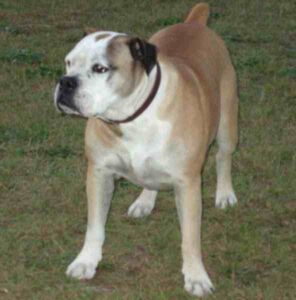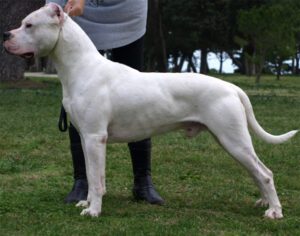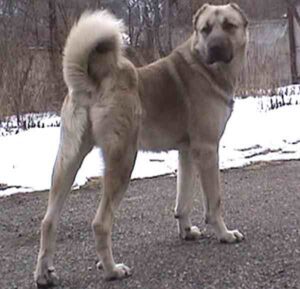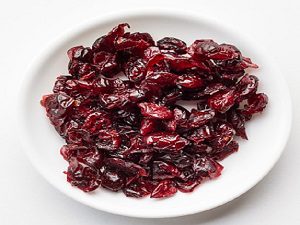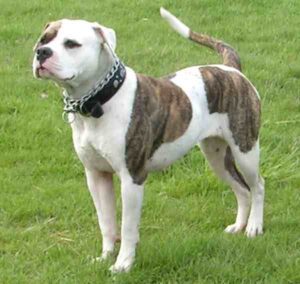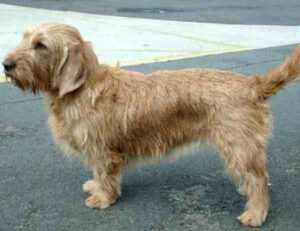The American Hairless Terrier dog is a breed of feist from the United States. It was derived from the Rat Terrier. The breed descends from a single Rat Terrier that was born in 1972 in Louisiana whose descendants were bred for hairlessness.
Originally registered as a hairless variety of Rat Terrier, in 2004 the United Kennel Club granted the American Hairless Terrier recognition, in 2016 the American Kennel Club followed suit. Many American Hairless Terrier dogs are still born with a coat, recognized as a coated variety.
Rat Terriers have been around since the early 1800s, when they were developed in England as one of dozens of terrier breeds created to exterminate rats that carried disease and raided food supplies in town and country.
Originally called “Feists” as a testament to their feisty temperament, these proto–Rat Terriers were prodigious ratters. They were employed on farms (where one ferocious barnyard Feist was said to have dispatched 2,500 rats on a single day) and in the infamous rat pits, where spectators bet on the number of rats that their favorite terrier could kill.
In the late 1800s, Feists were brought to rural America by British miners who sought a new life. It was here that the Feist was stabilized as a breed with crosses to the Smooth Fox Terrier. It is said that President Theodore Roosevelt, who adored his Feist named Skip, coined the name Rat Terrier.[1]
American Hairless Terrier Dog Characteristics
The American Hairless Terrier dog is of small to medium size. It comes in both coated and hairless varieties. They hairless variety might have eyebrows and whiskers, while the coated variety has a short, shiny coat.
The skin of the hairless variety is smooth and warm to the touch. Their head is broad and wedge-shaped which is the hallmark of both varieties. Erect, V-shaped ears frame the round, expressive eyes that gleam with curiosity. And the breed comes in a variety of colors and pattern with white.
Average height of the mature dos is between 12 and 16 inches at the withers. And average live body weight of the mature dog is between 5.4 and 7.3 kg.

Temperament
The American Hairless Terrier dogs are small to medium sized animals. They are energetic, alert, curious and intelligent. They are smoothly muscled and active terrier. Ancestor of the breed were bred to hunt rats and other vermin.
The lack of coat on the hairless variety of the American Hairless Terrier renders them unsuited for most hunting activities. They have, however, retained a strong hunting instinct and excel in many other activities and sports.
Lifespan
Average lifespan of the American Hairless Terrier dog is between 14 and 16 years.
Feeding
How much a mature dog eats depends on it’s size, age, build, metabolism and activity level. Dogs are individuals, just like people, and they don’t all need the same amount of food. You can consult with your vet for better recommendation.
Caring
Taking good care of the animals is very important for raising American Hairless Terrier dogs. They are very active, alert and intelligent dogs. They have a moderate exercise need. A brief daily sessions in a fenced-in yard or a regular walks will be enough for them.
They enjoy activity, but are also quite happy to curl up on the couch next to their owner. They are friendly and happy to play with people or other dogs. They have excellent trainability, and they can do well in a wide range of canine activities such as obedience, rally and agility competitions.
Health
The American Hairless Terrier dogs are generally healthy. But like all other dog breeds, they are also prone to certain health conditions. Their common health problems include hip dysplasia, cardiac conditions, luxating patella and Legg-Calve-Perthes disease. Keep good contact with a vet in your area.
| Breed Name | American Hairless Terrier |
| Other Names | AHT |
| Breed Size | Small to medium |
| Height | 12 to 16 inches tall at the withers |
| Weight | 5.4 to 7.3 kg |
| Good as pets | Yes |
| Climate Tolerance | All climates |
| Color | Variety of colors and patterns with white |
| Lifespan | Between 14 and 16 years |
| Good for children | Yes |
| Rarity | Common |
| Country of Origin | United States |

